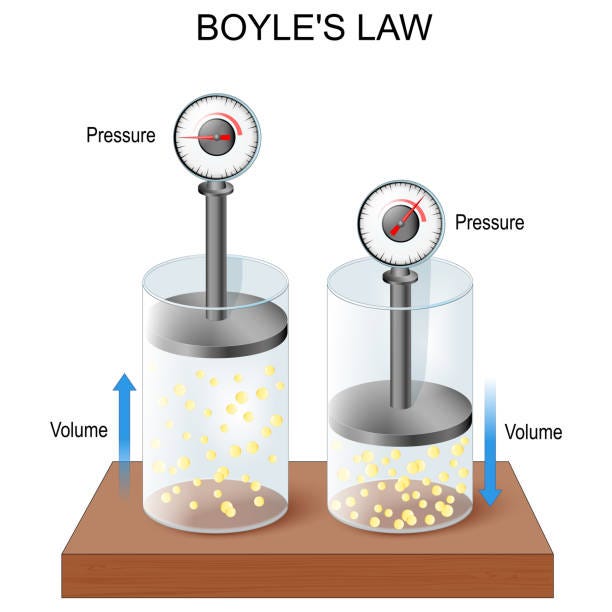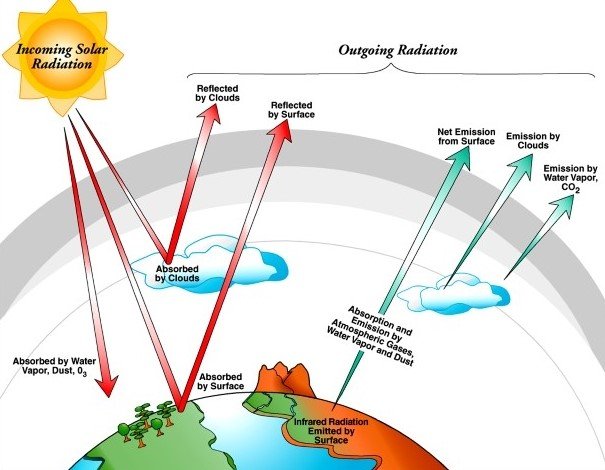When it comes to understanding the behavior of gases, pressure is a crucial factor that plays a significant role. Gas pressure is the force applied by the gas particles on the walls of the container. It is essential to measure and describe gas pressure accurately in various scientific and industrial applications. In this article, we will explore the different measurements used to describe the pressure of a gas and understand their significance.
The Role of Gas Pressure
Before delving into the measurements of gas pressure, it’s important to grasp the role of gas pressure in various contexts. Whether it’s in the field of chemistry, physics, or engineering, understanding and controlling gas pressure is vital for a wide range of processes. From maintaining the proper functioning of machinery to conducting accurate scientific experiments, gas pressure impacts numerous aspects of our daily lives.

Credit: medium.com
Measuring Gas Pressure: The Key Metrics
There are several measurements used to describe the pressure of a gas. These measurements provide valuable insights into the behavior and characteristics of gases under different conditions. Let’s explore some of the key metrics used for measuring gas pressure:
1. Atmospheres (atm)
Atmosphere (atm) is a unit of pressure commonly used in chemistry and meteorology. It is defined as the pressure exerted by a column of mercury 760 mm high at 0°C at sea level. While not commonly used in engineering applications, atmospheres provide a reference point for understanding gas pressure in scientific contexts.
2. Pounds Per Square Inch (psi)
Pounds per square inch (psi) is a unit of pressure often used in engineering and industrial settings. It is the pressure resulting from a force of one pound-force applied to an area of one square inch. This measurement is widely used in applications such as hydraulic systems, pneumatic tools, and automotive engineering.
3. Kilopascals (kpa)
Kilopascals (kPa) are commonly used in scientific research, industrial processes, and engineering design. One kilopascal is equal to 1000 pascals, which is a smaller unit of pressure in the International System of Units (SI). Kilopascals provide a convenient and widely adopted metric for describing gas pressure in various technical fields.
4. Millimeters Of Mercury (mmhg) And Inches Of Mercury (inhg)
The measurements of pressure in millimeters and inches of mercury are typically found in barometers and manometers. These units are particularly important in atmospheric and vacuum pressure measurements. They are used in weather forecasting, vacuum technology, and industrial processes that rely on precise pressure control.
5. Torr
Torr is a unit of pressure used in vacuum measurements. It is equivalent to the pressure exerted by a column of mercury 1 millimeter high and at 0°C. This measurement is particularly relevant in vacuum technology, scientific research, and industrial processes that involve low-pressure environments.
Choosing the Right Measurement
Each of these measurements offers unique insights into the pressure of a gas and has specific applications where it is most relevant. When selecting the appropriate measurement for a particular application, factors such as the precision required, compatibility with existing systems, and the standards of the industry or scientific field must be considered. It’s crucial to choose the right measurement to ensure accuracy and reliability in pressure-related processes.

Credit: www.thelancet.com
Frequently Asked Questions Of Which Measurement Describes The Pressure Of A Gas : Unveiling The Science
Q: How Is The Pressure Of A Gas Defined?
A: The pressure of a gas is defined as the force exerted by the gas per unit area. It is a measure of the gas molecules’ collisions with the container walls.
Q: What Unit Is Used To Measure The Pressure Of A Gas?
A: The pressure of a gas is typically measured in units of either Pascals (Pa) or atmospheres (atm).
Q: What Causes The Pressure Of A Gas To Increase?
A: An increase in the temperature or the number of gas molecules in a given volume leads to an increase in the pressure of the gas.
Q: Can The Pressure Of A Gas Be Negative?
A: No, the pressure of a gas cannot be negative. It is always represented as a positive value.
Conclusion
Gas pressure is a fundamental aspect of the behavior of gases and plays a crucial role in various scientific, industrial, and engineering applications. By understanding the different measurements used to describe gas pressure, professionals and researchers can make informed decisions and achieve precision in their work. Whether it’s in chemistry laboratories, industrial plants, or meteorological stations, the accurate measurement of gas pressure is essential for driving progress and innovation.
For more insights into gas pressure and related topics, stay tuned to our blog for the latest updates and informative articles on scientific principles and applications.

